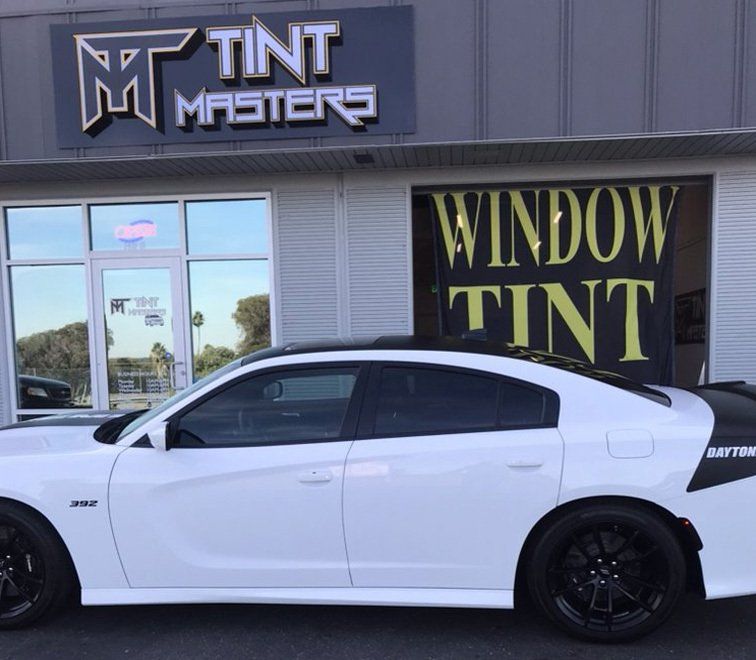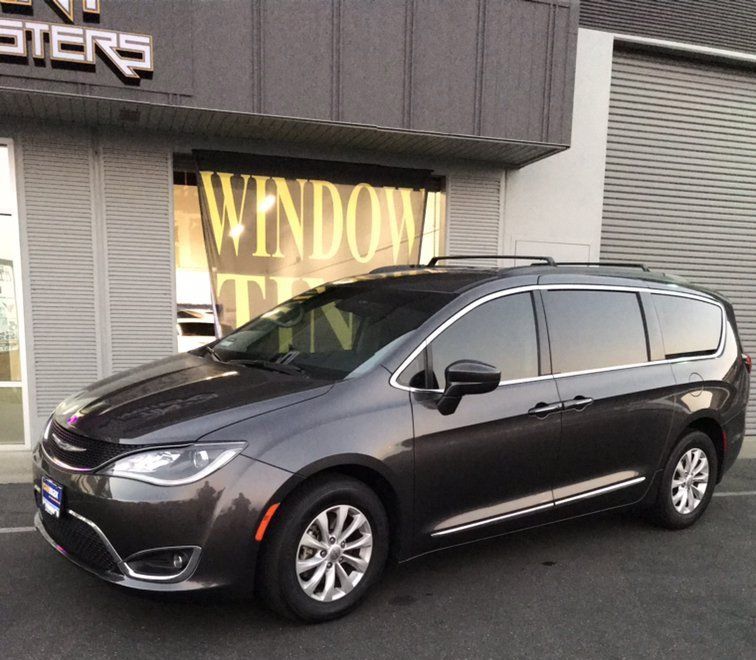California Window Tinting Laws
California window tint law restricts windshield tint on top 4 inches. Front side windows must have 70% light transmission or more. Back side windows and rear window may have any tint darkness.
Car window tinting laws in California were enacted in 1999. We have provided all the necessary information about your car's window tint, including how dark or reflective the tint is allowed in your state. There are also additional car window tinting rules and regulations in California so make sure you read all about it below
Window tint darkness in California
The percent of visible light allowed through your car windows is called VLT: Visible Light Transmission. The percentage of light allowed through your film and glass in California is very specific and different for sedan cars and SUV cars or vans.
Tint darkness for sedans:
Windshield: Non-reflective tint is allowed on the top 4 inches of the windshield.
Front Side windows: Aftermarket film must allow more than 88% of light in, or minimum 70% VLT if combined with factory-tinted windows.
Back Side windows: Any darkness can be used.
Rear Window: Any darkness can be used.
Tint darkness for SUV and vans:
Windshield: Non-reflective tint is allowed on the top 4 inches of the windshield.
Front Side windows: Aftermarket film must allow more than 88% of light in, or minimum 70% VLT if combined with factory-tinted windows.
Back Side windows: Any darkness can be used.
Rear Window: Any darkness can be used.
Window tint reflection in California
Window tint can reflect incoming light and reduce glare and heat. California window tint law permits a certain window reflection when using a tint so make sure you pay attention to this as well.
Tint reflection for sedans:
Front Side windows: Must not be more reflective than a standard window.
Back Side windows: Must not be more reflective than a standard window.
Tint reflection for SUV and vans:
Front Side windows: Must not be more reflective than a standard window.
Back Side windows: Must not be more reflective than a standard window.
Other California window tint rules and regulations:
California does have several other important laws, rules and regulations pertaining to window tinting. They include the following:
- Side Mirrors: Dual side mirrors are required if the rear window is tinted.
- Restricted Colors: California tint laws do not permit using red, amber or blue tint colors. Side windows must be colorless.
- Certificates: Manufacturers of film must certify the film they sell in the state and the driver is required to have the certificate in their possession.
- Stickers: State law does require a certificate or a sticker from the installing company and the manufacturer's name and address.
- Medical Exceptions: California law allows medical exemptions for lower tint on all windows.
Keep in mind that California tinting laws and regulations may be interpreted differently in your county or place of residence. We always recommend double-checking our information with your local DMV or law enforcement authorities.
Non- Reflective Film is allowed on the top 4 inches of the windshield. Driver door must allow more than 70% of light in. Any darkness can be used on rear passenger doors and rear window. Tint laws are the same in Vacaville and Dixon. California Window Law. Can I put after-market car window tinting on the windows of my vehicle? The windshield and front driver’s side and passenger’s side windows cannot receive any aftermarket window tinting. If the rear window has window film, the vehicle must have outside rear view mirrors on both sides. The law prohibits any person from driving any motor vehicle with any window film, displayed, installed, affixed, or applied upon the windshield or side or rear windows, with certain limited exceptions. However, legislation signed into law effective January 1, 1999, exempts from the above prohibition specified clear, colorless, and transparent car window tinting that is installed, affixed, or applied to the front driver and passenger side windows for the specific purpose of reducing ultraviolet rays. If, as, or when this material becomes torn, bubbled or otherwise worn, it must be removed or replaced.

Business Hours
Monday - Friday: 10am to 6pm
Saturday - Sunday: CLOSED
All Rights Reserved | Fairfield Tint Masters





